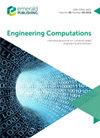Bifurcation analysis and control of an improved continuous traffic model considering weather effect
IF 1.5
4区 工程技术
Q3 COMPUTER SCIENCE, INTERDISCIPLINARY APPLICATIONS
引用次数: 0
Abstract
PurposeHighway traffic systems are complex and variable, and studying the bifurcation characteristics of traffic flow systems and designing control schemes for unstable bifurcation points can alleviate traffic congestion from a new perspective. Bifurcation analysis is used to explain the changes in system stability, identify the unstable bifurcation points of the system, and design feedback controllers to realize the control of the unstable bifurcation points of the traffic system. It helps to control the sudden changes in the stable behavior of the traffic system and helps to alleviate traffic congestion, which is of great practical significance.Design/methodology/approachIn this paper, we improve the macroscopic traffic flow model by integrating severe weather factors such as rainfall, snowfall, and dust. We use traveling wave transform to convert it into a traffic flow stability model suitable for branching analysis, thus converting the traffic flow problem into a system stability analysis problem. First, this paper derives the existence conditions of the model Hopf bifurcation and saddle-node bifurcation for the improved macroscopic model, and finds the stability mutation point of the system. Secondly, the connection between the stability mutation points and bifurcation points of the traffic system is analyzed. Finally, for the unstable bifurcation point, a nonlinear system feedback controller is designed using Chebyshev polynomial approximation and stochastic feedback control method.FindingsThe Hopf bifurcation is delayed and completely eliminated without changing the equilibrium point of the system, thus controlling the abrupt behavior of the traffic system.Originality/valueCurrently there are fewer studies to explain the changes in the stability of the transportation system through bifurcation analysis, in this paper; we design a feedback controller for the unstable bifurcation point of the system to realize the control of the transportation system. It is a new research method that helps to control the sudden change of the stable behavior of the traffic system and helps to alleviate traffic congestion, which is of great practical significance.考虑天气效应的改进型连续交通模型的分岔分析与控制
目的公路交通系统复杂多变,研究交通流系统的分岔特性,设计不稳定分岔点的控制方案,可以从一个新的角度缓解交通拥堵。分岔分析用于解释系统稳定性的变化,确定系统的不稳定分岔点,设计反馈控制器实现对交通系统不稳定分岔点的控制。它有助于控制交通系统稳定行为的突然变化,有助于缓解交通拥堵,具有重要的现实意义。本文通过整合降雨、降雪、沙尘等恶劣天气因素,改进了宏观交通流模型。我们利用行波变换将其转换为适合分支分析的交通流稳定性模型,从而将交通流问题转换为系统稳定性分析问题。首先,本文推导了改进宏观模型的模型霍普夫分岔和鞍节点分岔的存在条件,并找到了系统的稳定性突变点。其次,分析了稳定突变点与交通系统分岔点之间的联系。结果在不改变系统平衡点的情况下,延迟并完全消除了霍普夫分岔,从而控制了交通系统的突变行为。原创性/价值目前通过分岔分析解释交通系统稳定性变化的研究较少,本文针对系统的不稳定分岔点设计了反馈控制器,实现了对交通系统的控制。这是一种新的研究方法,有助于控制交通系统稳定行为的突然变化,有助于缓解交通拥堵,具有重要的现实意义。
本文章由计算机程序翻译,如有差异,请以英文原文为准。
求助全文
约1分钟内获得全文
求助全文
来源期刊

Engineering Computations
工程技术-工程:综合
CiteScore
3.40
自引率
6.20%
发文量
61
审稿时长
5 months
期刊介绍:
The journal presents its readers with broad coverage across all branches of engineering and science of the latest development and application of new solution algorithms, innovative numerical methods and/or solution techniques directed at the utilization of computational methods in engineering analysis, engineering design and practice.
For more information visit: http://www.emeraldgrouppublishing.com/ec.htm
 求助内容:
求助内容: 应助结果提醒方式:
应助结果提醒方式:


